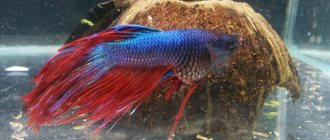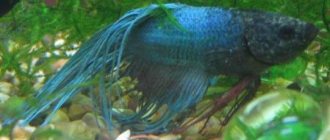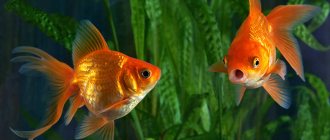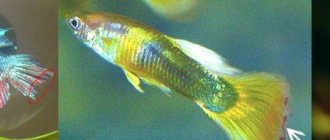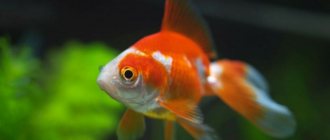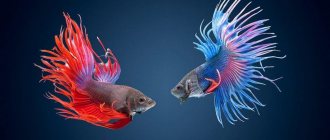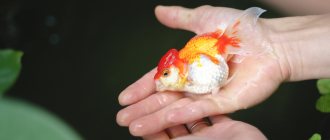Any disease of aquarium fish is a real tragedy for the aquarium owner. The problem is that even an experienced aquarist is not immune from this misfortune.
In this article we will look at diseases of aquarium fish photos and their treatment, as well as their first symptoms and means of prevention.
There is a science about fish diseases - ichthyopathology. There are two groups of fish diseases: contagious and non-contagious. Which ones do fish get sick from and how to treat aquarium fish, you will learn all this below in the text. So here we go:
Contagious and non-contagious fish diseases
Non-communicable fish diseases include:
- diseases caused by violations of the necessary conditions of detention
- diseases caused by improper handling of fish
Infectious diseases in fish are caused by a certain pathogen. They are divided into the following types:
— infectious (they are caused by various bacteria or fungi of plant origin);
— invasive (unicellular, multicellular parasites).
Let's take a closer look at the diseases in these categories.
Non-communicable fish diseases
Fish poisoning with chlorine
Refers to chemical factors. The first symptom of the disease is difficulty breathing in fish. As a result of prolonged exposure to water with chlorine, the gills become lighter in color and become covered with mucus. The fish are rushing around the aquarium, possibly trying to jump out of it. Then they become lethargic and do not respond to anything. Death can come suddenly and quickly.
To avoid such consequences, disinfection with chlorine should be carried out. Every time you change the water in the aquarium, you need to check it for the level of chlorination. If the first signs of poisoning appear, you must immediately remove the fish to another container with clean water.
Lack of oxygen in fish (anorexia)
Symptoms of the disease are restless behavior of fish that swim a lot at the surface of the water to capture oxygen. Snails that begin to rise from the bottom to the surface can also serve as a signal for lack of air. If fish experience a lack of oxygen for a long time, this can lead to weakened immunity, infertility, poor appetite, as well as suffocation and subsequent death.
It is necessary to periodically check the filter and aerator, as well as monitor the circulation of oxygen. The aquarium must be equipped with aeration equipment.
Unsuitable temperature conditions for fish
Occurs when the water temperature in the aquarium is too high or too low. More often this happens to those who are just starting to breed fish.
At elevated temperatures, fish are overly active and live near the surface of the water because there is more air there. When exposed to high temperatures, oxygen evaporates. The consequences of a long stay in such an aquarium are exhaustion, anorexia and oxygen starvation.
When the temperature is low, fish can behave quite the opposite: their movements become sluggish, they lie at the bottom and hardly move. If a fish swims for a long time in water with a low temperature, a cold develops, which sometimes leads to death.
You should carefully monitor the temperature regulator and thermometer, and carefully monitor the temperature when changing the water.
Alkali disease in fish (acidosis, alkalosis)
An increased (alkalosis) or decreased (acidosis) level of alkali in the aquarium often causes these diseases.
In the case of alkalosis, the fish are active, breathing actively, spreading their gills and fins, and their body color turns pale. Mucus is secreted from the gills.
With acidosis, fish are less mobile and active, but more timid. The fish swims sideways or upside down. It is important to know that this disease does not appear immediately, but after some time.
It is worth noting that alkaline diseases do not affect all types of fish, but only those that can hardly tolerate changes in the pH of the water. For example, in guppy fish, acidosis can cause fin splitting. A change in alkali can also lead to death.
You should carefully check the alkaline level in your aquarium using tests. It is advisable to initially find out what level is required for fish when purchasing it.
In the case of a gradual increase or decrease in alkali, the alkalinity should be brought to a neutral level. If the change occurs abruptly, then place the fish in clean water and bring the indicator to a neutral level.
Obesity fish
It occurs when the fat content of the food exceeds 3% (for herbivorous fish) and 5% (for carnivorous fish). Obesity can be caused by increasing the amount of food, monotony of the diet, or improper nutrition of fish.
This disease is not as harmless as it seems. First of all, the kidneys, liver, and mesenteries are affected. Outwardly, this manifests itself as lethargy of the fish, rounding of the sides. Obesity leads to infertility and death.
For prevention, you should carefully monitor the diet of the fish. Alternate different types of food, give fatty food - rich in proteins and ballast substances, or not feed at all for a couple of days. The aquarium must be spacious so that the fish can actively swim.
Fish gas embolism
The opposite of anorexia and oxygen starvation is a disease. Occurs when an excessive amount of oxygen causes the fish's blood vessels to become clogged, leading to poor circulation. You should regularly monitor the fish and the entire aquarium: if you notice small air bubbles on its walls, as well as plants or soil, then these are the first signs of the disease.
These same bubbles can appear on the fish itself, but it’s worse when they affect internal organs. They accumulate in blood vessels, leading to embolism and death. In this case, the fish themselves are restless and swim on their sides. The gill covers hardly move.
Air circulation must be checked. Inspect the aquarium for excess plants that produce excessive amounts of oxygen and contaminated soil. Food residues from plants emit gas that can cause embolism.
Treatment
A suitable pH level must be set. This can be achieved using a suitable pH buffer (available from a pet store). You can also use baking soda (NaHCO3) to alkalize your water. To slowly adjust the pH, it is better to use repeated partial water changes, and fresh water should have a pH close to neutral. Often tap water has exactly these properties. This is the best way to solve pH problems, since repeated partial water changes will eliminate the main cause - reducing the amount of excess organic waste or reducing the excessive mineral content, which usually lead to chronic acidosis and alkalosis, respectively.
- Acute acidosis, or alkalosis: Survival from sudden large changes in pH is unlikely unless the pH is immediately returned to normal levels. If the pH is returned to normal gradually, then the fish will be exposed to the harmful effects of an inappropriate pH for too long. However, acute acidosis and alkalosis are usually fatal, even if corrected quickly. Therefore, it is very important to determine the cause of the problem and take necessary measures to prevent it from recurring.
- Chronic acidosis or alkalosis: The pH needs to be slowly adjusted to bring it within the optimal range for the fish. The rate of pH change should not exceed 0.3 units. per day so that the fish have the opportunity to gradually adapt to the changes.
Note
. There is a risk of infection that accompanies or follows acidosis or alkalosis. This infection is possible as a result of stress-induced suppression of the fish's immune system (especially if the problem is chronic). Due to inappropriate pH values, gills and skin membranes are damaged, making them vulnerable to secondary infections.
Contagious fish diseases
They are caused by bacteria (infectious).
White-skinned fish
The cause of white skin is the bacterium Pseudomonas dermoalba, which enters the water with infected fish or plants. Symptoms include a change in skin color to a lighter or completely white color, as well as the fact that the fish swim only on the surface of the aquarium.
White skinned fish can be treated at the earliest stages by removing the fish from the aquarium into a container with a solution of chloramphenicol. The water itself and the soil in the aquarium are disinfected.
Fish fin rot
Fin rot is a disease that often occurs in fish of different breeds. The reason for its occurrence is poor water quality, as well as damage to the fins as a result of bites from neighboring fish. The disease, the carrier of which is Pseudomonas, can be identified by changes in the fins: their shape is deformed, they become smaller, and change color to a lighter shade. If the disease affects the body, the fish begins to rot.
If the cause of the disease is poor quality water, then it should be changed; if it bites, then place the fish in another container.
Fish tuberculosis (Mycobacteriosis)
This dangerous disease has numerous symptoms, different for different types of fish. The following groups are most often affected by them: viviparous, labyrinthine, gourami. A common symptom for all fish: apathy, lethargy, poor appetite, loss of orientation. The development of the disease leads to the appearance of abscesses, bulging eyes, and ulcers. Some types of fish become completely blind and covered with black dots; others have protruding bones. The difficulty is that mycobacteriosis is difficult to distinguish from other diseases. Therefore, in the initial stage of the disease it is still possible to cure it, but in the later stage the fish most likely die.
For recovery, copper sulfate is used, as well as trypoflavin and monocycline.
Neon fish disease (Plistiphorosis)
This extremely dangerous disease is caused by an amoeba sporozoan. And representatives of carp fish are most susceptible to it. A clear sign is the noticeable jumping movements of the fish. They stick to the surface of the water more, while keeping their heads down. If a fish lives in a school, it stays alone and avoids society. Also, the fish stop eating food, and the coordination of their movements is disrupted. The color of the skin also fades.
Unfortunately, neon disease has not yet been studied well and a unified method for restoring fish has not yet been invented.
Ichthyosporidiosis of fish
Along with glutenosis, it is one of the most dangerous diseases. The causative fungus almost instantly affects all organs of the fish. It is difficult to determine the disease in the early stages, since there are no definite signs. And the symptoms appear depending on which organ the infection has entered.
Common signs include spasmodic movements, bulging eyes, convulsions, and immobilization. In the early stages, the disease is extremely difficult to detect, and in the later stages it is impossible to cure.
Hole fish disease (Hexamitosis)
Most often, all freshwater animals become victims, and the intestines and gall bladder suffer from the pathogen - the intestinal flagellate. It ends up in the aquarium along with the fish, where its larvae are already present. Sometimes hexamitosis occurs due to poor quality water. Symptoms of hexamitosis include: fasting, color change, seclusion, and mucous discharge on the body.
Treatment is possible only in the early stages. To do this, the aquarist needs to add a solution of metronidazole to the water (in a ratio of 25 liters - 200 mg) and feed the fish with food with vitamins. The fish themselves should be placed in another place at this time.
Peptic ulcer disease in fish
A common disease. Its complexity is that the pathogen - the microbe Pseudomonas fluorescens - can get into the aquarium in a variety of ways. The cause may also be sick fish or food already containing a microbe. Dark spots on the body of the fish are the first and main symptom of the development of the disease.
Over time, the spots become small bleeding ulcers. After some time, the fish’s eyes and scales become inflamed, and they are reluctant to eat. Then, along with the ulcer, an infection can also enter the body.
For the recovery of fish, streptocide is used at the rate of one tablet per ten liters or a solution of potassium permanganate. Unlike many other diseases, peptic ulcer disease can be treated in a community aquarium.
Symptoms
In the acute form of the disease, the fish move sharply and are excited. Then rapid death may occur.
The chronic form of the disease is less pronounced. Difficulty and frequent breathing, excessive mucus production are noticeable.
Itching and irritation of the skin develop, and the stomach swells. When the pH drops below 5, gray spots form on the gills.
Both alkaline and acidic environments contribute to damage to the gills, as well as the development of serious pathological changes in the body.
Contagious diseases. Invasive
Fish glucose
It is one of the most dangerous and serious diseases, as it affects the entire body of the fish. They begin to float on one side, their eyes bulge, and bumps appear on their body - whitish or bloody - similar to tumors. Representatives of carp fish species are most often susceptible to this disease. Unfortunately, if glutenosis is detected, the fish, like everything else in the aquarium, must be destroyed and then disinfected, since the disease cannot be treated.
Fish trichodinosis
Occurs when food gets into the water, as well as with plants and soil. The first symptoms are almost invisible: the fish rubs against stones and soil. Then a whitish coating appears on the body, which separates over time. The gills change color to a lighter shade and become coated with mucus. The fish does not eat, it breathes more often. If the disease is not treated, the fish may die.
It is necessary to treat at an early stage. To do this, the fish is placed in another container with a water temperature of 31 degrees and methylene blue or table salt is added to it (20 g per 10 liters).
Fish bone disease (Ichthyobodosis)
The symptoms are similar to the previous illness. A slimy coating appears on the body, and the affected areas begin to decompose. The fins stick together, become covered with mucus, and the gills change color. Because of this, the fish rises to the surface at frequent intervals to swallow air. If the disease is started, then as a result, mass death of fish will occur.
The causative agent - the flagellate Costia necatris - ends up in water with plants, food, soil from a reservoir and develops at a water temperature of 20-30 degrees.
They either try to cure the fish in the aquarium itself, raising the temperature to 32-34 degrees, at which the pathogen dies, or they place it in another container, which is treated with mythelenium blue.
In general, fish diseases can be prevented if proper care and feeding are provided. When you buy fish, pay attention to their condition. It is not recommended to buy fish from hand, outside the store.
You are more likely to buy sick fish from an ad than to go to the store. Carefully monitor the condition of the fish, provide them with good living conditions, and your pets will get sick less often.
Leave a review and receive an SEO site audit as a gift:
General recommendations to avoid diseases
Treating aquarium fish is not an easy task, and not every veterinarian will undertake it. To avoid a situation requiring urgent specialist intervention, you need to adhere to simple preventive measures:
- do not purchase individuals with growths on the body and skin defects;
- do not allow only purchased fish into the common aquarium;
- disinfect all items immersed in the tank;
- control the purity and temperature of water using instruments;
- provide the fish with fresh, high-quality food and establish a diet;
- treat new plants with a weak solution of potassium permanganate;
- do not allow overcrowding of the aquarium;
- change up to 30% of the total volume of water in the tank weekly;
- control the acidity of the water and, if necessary, reduce it with a solution of table salt;
- siphon the soil to remove fish waste, food debris and rotten plants.
It is important! Aquarium accessories (siphon, hose, net, etc.) used in the quarantine tank must not be placed in the general aquarium.

